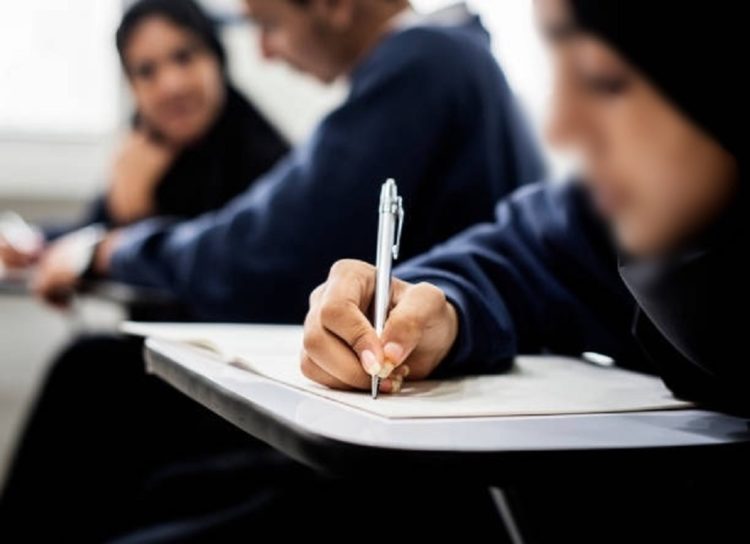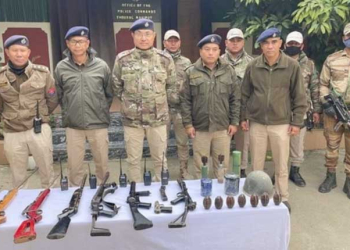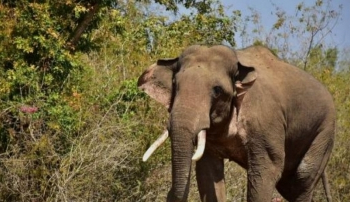Bengaluru: The issue of wearing a hijab (head covering worn in public by Muslim women) to the colleges along with the uniform has sparked a debate in Karnataka over religious practices impacting the education system in the state. The matter has also snowballed into a controversy on whether the hijab could be considered as part of the uniform.
The ruling BJP is deliberating on whether to take a call on allowing hijab as part of the uniform of college students. State Education Minister B.C. Nagesh, while opposing the wearing of hijab to classrooms, has said that a decision would be taken on the issue soon by the government.
The experts as well as students are divided over the issue. Those who are in favour state that the dress code in classrooms should not indicate faith or religion as it creates barriers between students as well as teachers. Those who support the wearing of hijab say that hijab should be treated as a scarf. Hijab is black in colour and it can’t be a religious symbol as Islam is identified with the green colour. The hijab should be treated as a symbol of chastity, they maintain.
The denial of permission to six girls in the Government Girls’ Pre University College in the communally sensitive district of Udupi in the state has created a controversy. Nagesh dubbed it as a political move and questioned whether centres of learning should become religious centres.
Meanwhile, the girl students have decided to continue their protest until they are allowed to attend classes wearing hijab.
“I have been facing the issue of hijab. We have not been allowed into the classroom just because we are wearing hijab. Though it’s our fundamental and constitutional right they are not allowing us. It’s a government college though. There is a lot of discrimination in the college, we can’t speak to each other in Urdu, we can’t say salaam to each other in the college. This matter has become communal and we are so sad about it. We did not want this to become communal,” Aliya Assadi, a protesting student explained.
“Many political parties are taking advantage of this. We are just asking for basic fundamental rights. I don’t know why it is so tough to take us inside with a headscarf. We are not asking permission with burqas. Last Friday, the college principal and four professors made protesting students give an apology letter by blackmailing them that their statements on hijab are false. For basic rights do we have to do so much?” she asked.
“They tease that we will never win in this protest. They called our parents many times and tried to manipulate them. I request government officials to respond on the issue and allow us to wear hijab. We don’t want options. We want to study, come up in life as well as wear hijab,” explained Almas.
Eight students of the college are still protesting in the college campus for being denied entry into the classrooms for wearing hijab along with the uniform. Five of them are studying in II PUC and three students are studying I PUC.
The students are turning down the demands of shunning hijab and are firm on their stand that until the government gives them permission to wear hijab and attend classes, they will sit outside the classrooms and continue to protest. They maintain that it is their religious freedom and constitutional right to wear hijab.
Sathish M Bejjihally, Bengaluru City University Academic Council Member and Principal Vidya Sanskaar Institute of Science, Commerce and Management, told IANS that educational institutions should be devoid of caste, colour, religion. Students come to school for learning. There may be differences of opinion however, there should not be differences among individuals.
“The dress should not indicate faith, religion. It will create barriers between students. The development may lead to clashes in the educational institutes. Swami Vivekananda has stated that education is the manifestation of perfection which is already there in the child. The child was born as ‘vishwa manava’ (global citizen), but society restricts him to become one” he said.
The students wearing hijabs will miss out on peer group learning. Uniform is a comfortable cloth designed to facilitate participation of students in sports, cultural activities, he explained.
However, Professor Muzaffar Assadi, Dean Faculty of Arts in ManasaGangothri in Mysuru University, explained that dress code is about decency. We should be allowed to wear hijab just as sarees, Punjabi dresses are allowed. Hijab could be treated as a headscarf and it will not hide the uniform.
“If hijab could be treated as a religious symbol then students can’t come to classes with kumkum (bindi, vermillion), bangles. No public school is completely secular. Saraswathi pooja is conducted, Hindu gods’ photos will be on walls, festivals are celebrated in schools, aren’t they religious?” Assadi asks.
Hijab is a symbol of chastity, not a religious one. “Why don’t you treat it as just a scarf? If you see everything in that perspective then wearing of ‘Janivaar’ (sacred thread) is also religious. Hijab is not religious as it is of black colour. Islam is identified with green colour. Black also represents dissent and sadness, he says.
The dress which does not attract sexual appetite, indecent, against the rules and which does not cover uniform should be allowed. “Let us celebrate cultural diversity. I oppose uniform culture itself. One of my colleagues who is retiring always comes for lectures in jeans and a t-shirt. It should not matter,” he said.
Premashree, Central Working Committee Member of Akhila Bharatha Vidyarthi Parishad and student of LLM, explained that students have to come with a feeling of unity.
“Anything which affects unity and gives scope to groupism we will oppose. There should not be saffron shawls either in the campus,” she said.
“Since 75 years the uniform system in the country has been maintained like this and it has to be maintained like that,” she opines.
Masood Manna, State Committee Member of Campus Front of India (CFI), said, “If there is no solution found by the government they will stage a protest. “It is a violation of the right to education and the right to practice religion,” he said.
Nagesh told IANS that a decision had been made by the School Development and Management Committee in 1985. The committee has taken a decision with regard to uniforms in the campus. “So far all children are following the rule. Whichever institution it is, if they make a rule, the students who want to study must be obliging. All these days the uniform rule was followed and why did they suddenly change?” he asked.
“It is political. What if others start wearing dresses according to their wishes? Do we have to allow them, the students will come in half dresses, and do we have to allow them?” Nagesh questioned.
A similar incident was reported from Chikkamaglur district. One group of students started wearing saffron shawls protesting the wearing of hijabs by some girl students in the college. The authorities have resolved the issue after holding a parents-teachers meeting.
Now, all eyes are on the move of the ruling BJP in the state over the issue of wearing of hijab by students.
(IANS)



















